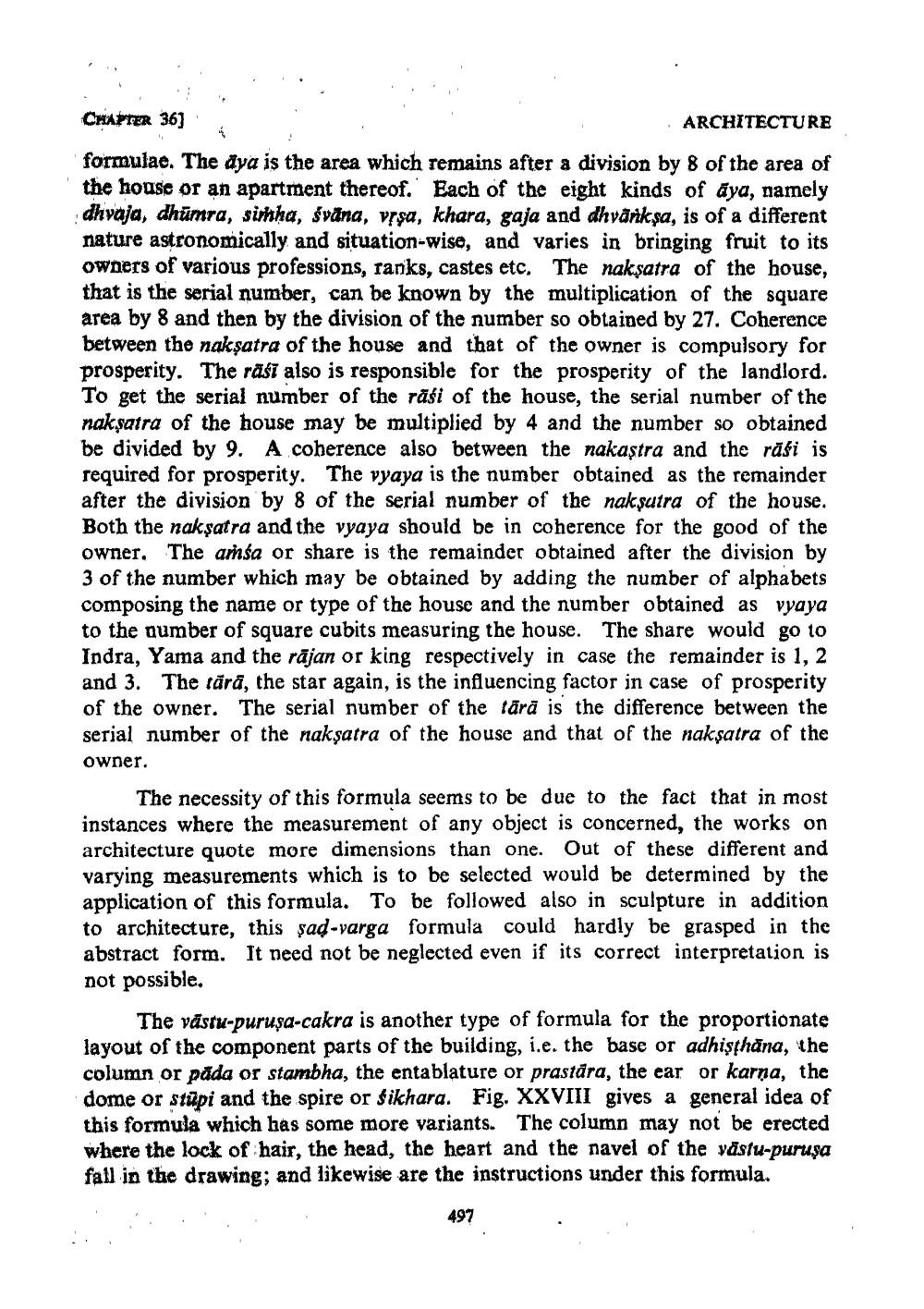________________
CHAPTER 36]
ARCHITECTURE
formulae. The dya is the area which remains after a division by 8 of the area of the house or an apartment thereof. Each of the eight kinds of āya, namely dhvaja, dhūmra, simha, sväna, visa, khara, gaja and dhväriksa, is of a different nature astronomically and situation-wise, and varies in bringing fruit to its owners of various professions, ranks, castes etc. The naksatra of the house, that is the serial number, can be known by the multiplication of the square area by 8 and then by the division of the number so obtained by 27. Coherence between the nakşatra of the house and that of the owner is compulsory for prosperity. The rašī also is responsible for the prosperity of the landlord. To get the serial number of the rāśi of the house, the serial number of the nakṣatra of the house may be multiplied by 4 and the number so obtained be divided by 9. A coherence also between the nakastra and the rāfi is required for prosperity. The vyaya is the number obtained as the remainder after the division by 8 of the serial number of the naksutra of the house. Both the nakşatra and the vyaya should be in coherence for the good of the owner. The arśa or share is the remainder obtained after the division by 3 of the number which may be obtained by adding the number of alphabets composing the name or type of the house and the number obtained as vyaya to the qumber of square cubits measuring the house. The share would go to Indra, Yama and the rājan or king respectively in case the remainder is 1, 2 and 3. The tārā, the star again, is the influencing factor in case of prosperity of the owner. The serial number of the tārā is the difference between the serial number of the nakşatra of the house and that of the nakşatra of the owner.
The necessity of this formula seems to be due to the fact that in most instances where the measurement of any object is concerned, the works on architecture quote more dimensions than one. Out of these different and varying measurements which is to be selected would be determined by the application of this formula. To be followed also in sculpture in addition to architecture, this şad-yarga formula could hardly be grasped in the abstract form. It need not be neglected even if its correct interpretation is not possible.
The văstu-puruşa-cakra is another type of formula for the proportionate layout of the component parts of the building, i.e. the base or adhisthana, the column or påda or stambha, the entablature or prastara, the ear or karna, the dome or stüpi and the spire or śikhara. Fig. XXVIII gives a general idea of this formula which has some more variants. The column may not be erected where the lock of hair, the head, the heart and the navel of the vastu-puruşa fall in the drawing; and likewise are the instructions under this formula.
497




